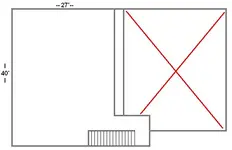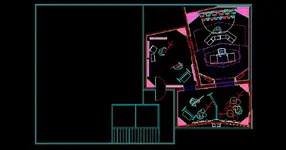So you're talking about building a smaller room within the big room? Actual room construction is beyond my knowledge, I know a bit more about acoustically treating an existing room and setting up in it than the optimum dimensions of a new room.
I do know that non parallel walls can be helpful, but only with higher frequencies, and that no matter what you do you'll need bass traps. Also, to avoid having bad room modes you should design the room to have all three dimensions different and unrelated to each other. As in, if the room is ten feet wide, don't make it ten feet long because it will reenforce the same frequencies, and don't make it fifteen or twenty feet long either because those dimensions are multiples of the first dimension.
There's something called "The Golden Ratio" that many use when designing rooms and speaker cabinets, and that ratio is 1:1.618:.618. It does work to keep room modes minimized (but DOES NOT negate the need for bass trapping) but any set of irrational numbers will do fine.
Translated into material terms, this would mean that if your room (just for the sake of argument, I know this would be a stupid room) had a ten foot ceiling, then the other two dimensions could be just over six feet and sixteen feet.
Realistically though, it may be easier and more cost effective to just treat the room you have. Having a room all tuned and everything sounds cool, but you can treat any room and have it sound good.






 oh well, I was in a hurry.
oh well, I was in a hurry.